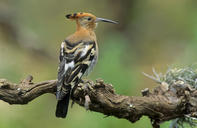
Did You Know?
Southern Africa has one of the most diverse ranges of bird species in the world. The different climates, vegetation types, and habitat reflect greatly on the more than 900 species of birds in Southern Africa. There are 3 major categories of birds, namely seed-eaters (sparrows, finches, doves, etc.), nectar-feeders (hummingbirds, etc.) and predatory raptors (eagles, vultures, hawks, falcons, etc.).
Smaller seed-eating birds are adapted with small bills or beaks to forage, whilst predators have sharp claws and beaks to tear into their prey. The Kruger National Park is home to a good number of South Africa’s raptors. Vultures occur most in central grasslands, while eagles prefer mixed woodlands along drainage lines where prey is more abundant.
Why Do Birds Migrate?
The main reason for migration is for a better food source or nesting locations, which is reached in warmer climates. The supply of food (mostly bugs and insects) in their country of origin becomes limited as their climate becomes colder.
This need for energy and breeding compels migrating birds to cover thousands of miles in their annual travels to other continents, often travelling the same course year after year with little deviation. Birds that migrate to South Africa include the greater striped swallow, white-rumped swift, white stork, pygmy kingfisher, yellow-billed kite and the European bee-eater.
What is the Difference Between Doves and Pigeons?
Doves and pigeons belong to the same family, Columbidae, so there are no real differences. The only difference is in their size, with the dove being the smaller of the two. The pigeon belongs to a sub-family of which only green parrot-like pigeons are actually called pigeons.
The common pigeon that we see is in fact also a dove. For convenience purposes, just keep calling these birds African green pigeons, ring-necked doves etc.
Why Does a Woodpecker Peck?
Woodpeckers do this to forage for worms and other insects under the bark of tree branches. They also peck to make holes for nests and to communicate with other woodpeckers.Is there a Difference Between Geese and Ducks?
Similarly to the ‘dove and pigeon’ dilemma, a goose is actually a duck. They, along with the swan, are members of the same family - Anatidae, but have been so named many years ago for mere convenience. Geese were seen to be something between a duck and a swan but with fairly elongated necks compared to ducks.
Geese usually make a honking sound and ducks quack. The one behavioural difference between geese and ducks is their nesting habits, with the duck nesting in tree-holes.
Can Vultures Hunt?
Vultures are physically capable of hunting but their talons (sharp, hooked claw at the end of the toe) and toes aren’t as agile as those of the other birds of prey. Vultures are gregarious birds who are able to dominate and intimidate in numbers and thus don’t always need to hunt. There are some vulture species that are capable of killing small vertebrates like rodents and even young antelope.Do Owls Actually Hoot?
No, owls don’t ‘hoot’ but rather whistle, screech or croak. These sounds are made when an owl exhales and are a means of declaring its territory and attracting or communicating with a mate. It has been found that calling occurs mostly before egg-laying and nesting.What are the Differences Between Falcons and Eagles?
Falcons have a slender body, long pointed wings and hunt in the air. They do not build their own nests, but rather use that of other raptors. Eagles are more robustly built with broad wings, scaly legs and a reversible outer toe to hold prey. They build their own nests and usually return to the same nest and nesting territory each year.Why do Birds of Prey Soar?
Soaring is common amongst most birds and is fuelled by thermals. These are currents of rising warm air that are formed on the ground through the warming of the surface by sunlight. The birds maintain the surface of their wings against these currents to save energy and keep them elevated.
By flying a spiraling circular path within these columns of rising air, birds are able to reach higher altitudes while expending very little energy in the process. This also provides the birds with a view of far distances, thus the impression that they appear from ‘nowhere’.
 The South Africa Bird Guide offers a wide range of bird behaviour and birding facts that will interest even the most reluctant student. The ...
The South Africa Bird Guide offers a wide range of bird behaviour and birding facts that will interest even the most reluctant student. The ...